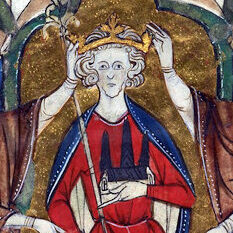1263

Edward was the first to return. Scolded by his father for “indolence and wantoness” while the Welsh ravaged the marches, he landed with a large mercenary force of Burgundians and other French-speaking soldiers. His jilted retainers had half-expected him to take them back into his service, but he completely ignored them and bestowed castles and other key posts on his new, alien followers. Incensed, they welcomed Simon de Montfort home as the one leader who had always been faithful to the Provisions, who was capable of enforcing the one provision they desired above all else: expulsion of the aliens. It was, of course, the great irony of this conflict that the English would turn to an alien for this purpose. Simon’s military reputation and unwavering defense of the Provisions made him the undisputed leader of this rebellious force that gathered in Oxford, where the reform program had been launched five years earlier. New adherents included many younger members of the baronage, among them Henry’s nephew Henry of Almain and the new earl of Gloucester, Gilbert de Clare, men later decried for being pliable as wax in the hands of a man like Montfort. He would need such idealists to offset the violence and unruliness of the Edwardians, who immediately went to work after Henry rebuffed one last call to observe the Provisions. They struck east, targeting the Savoyards and other aliens, even making knowledge of English a prerequisite to avoid reprisals. Locals long fed up with nobles, knights and clergymen who couldn’t speak their language joined in the mayhem until Henry found himself faced with a full-scale uprising. Richard rode off to intercede with Simon, but missed him on his march to secure the coast and trap Henry in London. But even that city was lost after Edward, needing money to pay off his mercenaries, staged the first great bank robbery in English history when he broke into the New Temple and seized the private deposits there. His mother grew sufficiently alarmed by the growing hostility to try to flee to Windsor by boat, but her barge was turned back after being pummeled with all manner of filth and flying objects thrown at her by a jeering crowd on London Bridge. She and her kinsmen eventually escaped to the continent, but for Henry it was all too much. He agreed to the restraints on his power enacted in 1258 and to the council naming his officials and conducting official policy. The only difference was the council was now controlled by Simon de Montfort.

The leader of the ruffians was Roger Leybourne, Edward’s former henchman until purged by Queen Eleanor on the grounds of embezzlement. He was a typical marcher savage, not above hanging servants or underhandedly killing an opponent in tournaments. Among these other violent Edwardians, Roger Clifford was the most susceptible to flip-flopping, and Hamo Lestrange had perhaps the most improbable name.
Henry of Almain’s only known contribution to the cause was pursuing John Mansel after the king’s most loyal and acquisitive clerk fled across the water. It was a bungled move, for Henry was immediately imprisoned by a French nobleman upon arrival. His father Richard, fed up with Edward’s freebooting, had been entertaining feelers from Simon’s party. He now demanded his son’s release or else.